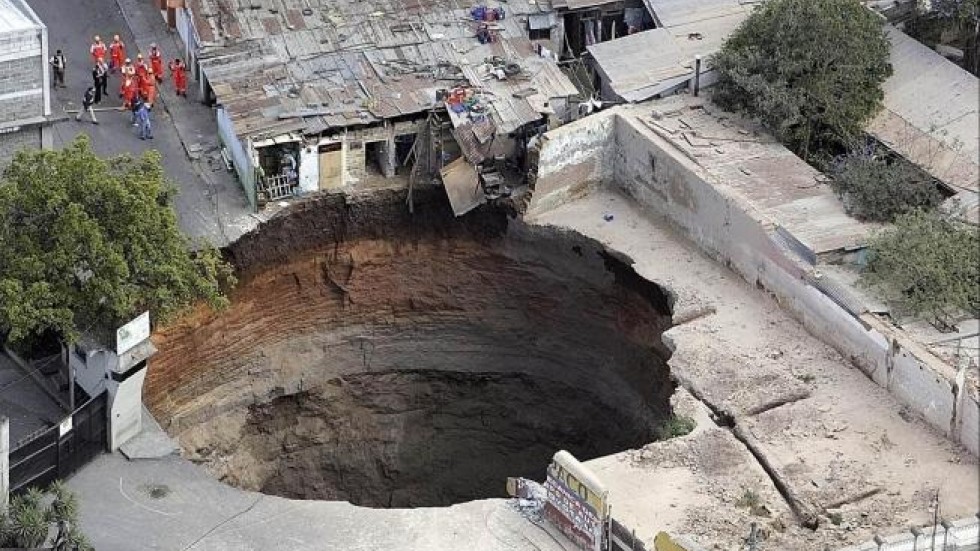A dangerous geological phenomenon is an event that occurs as a result of the activity of geological processes that occur in the earth's crust under the influence of various geological or natural factors or when they are combined, and which adversely affect plants, people, animals, the natural environment, and objects of the economy. Most often, geological phenomena are associated with the movement of lithospheric plates and changes occurring in the lithosphere.
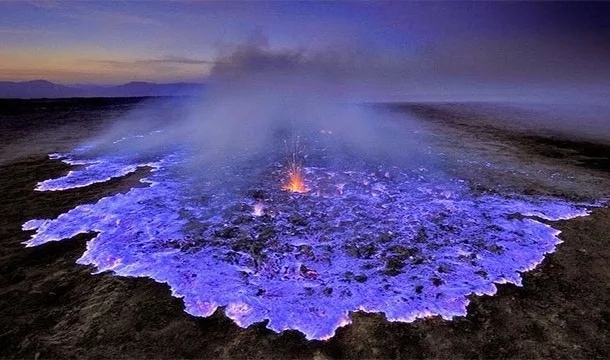
Types of Hazards
Geological hazards include the following:
- screes and landslides;
- sat down;
- subsidence or dips of the earth's surface as a result of karst;
- Kurums;
- erosion, abrasion;
- avalanches;
- flushing;
- landslides.
Each species has its own characteristics.
Landslides
Landslides are a geological hazardous phenomenon, which is a sliding displacement of rock masses along slopes under the influence of their own weight. This phenomenon occurs as a result of washing off a slope, due to seismic shocks, or in other circumstances.
Landslides occur on the slopes of hills and mountains, on the steep banks of rivers. They can be caused by a variety of natural phenomena:
- earthquakes;
- heavy rainfall;
- uncontrolled plowing of slopes;
- cutting of slopes when laying roads;
- as a result of deforestation;
- during blasting operations;
- with abrasion and river erosion, etc.
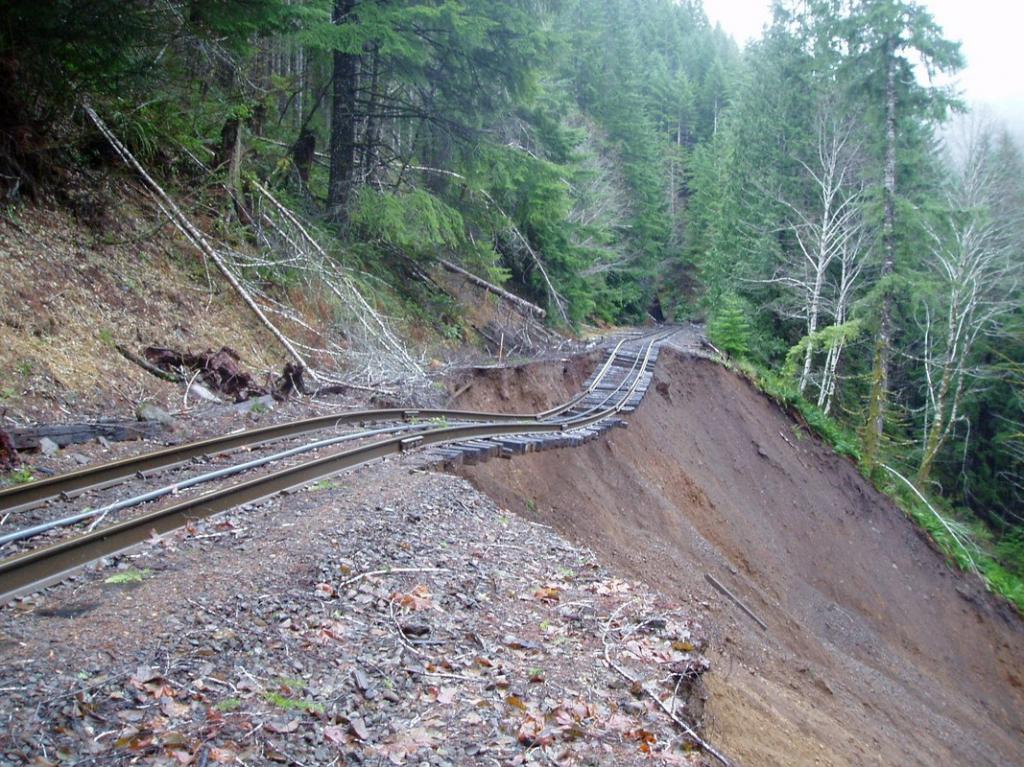
Landslide Causes
Landslides are a dangerous geological phenomenon that most often occurs as a result of exposure to water. It seeps into the cracks in the soil, which causes destruction. All loose deposits are saturated with moisture: the resulting layer plays the role of a lubricant between layers of earthen rocks. When the inner layers break, the detached mass begins to float down the slope.
Landslide classification
There are several types of hazardous geological phenomena, divisible by speed:
- Very fast. They are characterized by mass movement at a speed of 0.3 m / min.
- Fast are characterized by the movement of masses at a speed of 1.5 m / day.
- Moderate - landslide occurs at a speed of one and a half meters per month.
- Slow - speed - up to one and a half meters per year.
- Very slow - 0.06 m / year.
In addition to speed, all landslides are divided by size. According to this criterion, this phenomenon is divided as follows:
- grandiose, covering an area of more than four hundred hectares;
- very large - landslide area - about two hundred hectares;
- large - area - about a hundred hectares;
- small ones - 50 ha;
- very small - less than five hectares.
The power of a landslide is characterized by the volume of displaced rocks. This figure can reach several million cubic meters.
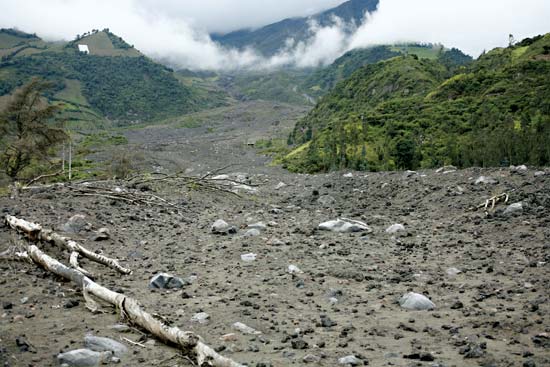
Mudflows
Another dangerous geological phenomenon is mudflow, or mudflow. This is a temporary rapid mountain stream of water mixed with clay, sand, stones, etc. For the mudflow is characterized by a sharp rise in water level, occurring by wave motions. Moreover, this phenomenon persists for a short time - for a couple of hours, but has a strong destructive effect. The area affected by the mudflow is called the mudflow basin.
For the occurrence of this dangerous geological natural phenomenon, the simultaneous fulfillment of three conditions is necessary. Firstly, there should be a lot of sand, clay and small diameter stones on the slopes. Secondly, to wash all this off the slope, you need a lot of water. Thirdly, mudflow can occur only on steep slopes, with an inclination angle of about twelve degrees.
Causes of mudflows
Hazardous mudflow can occur for various reasons. Most often this phenomenon is observed as a result of intense rains, rapid melting of glaciers, as well as as a result of tremors and volcanic activity.
Sel can occur as a result of human activities. An example of this is deforestation on mountainsides, quarrying or mass construction.
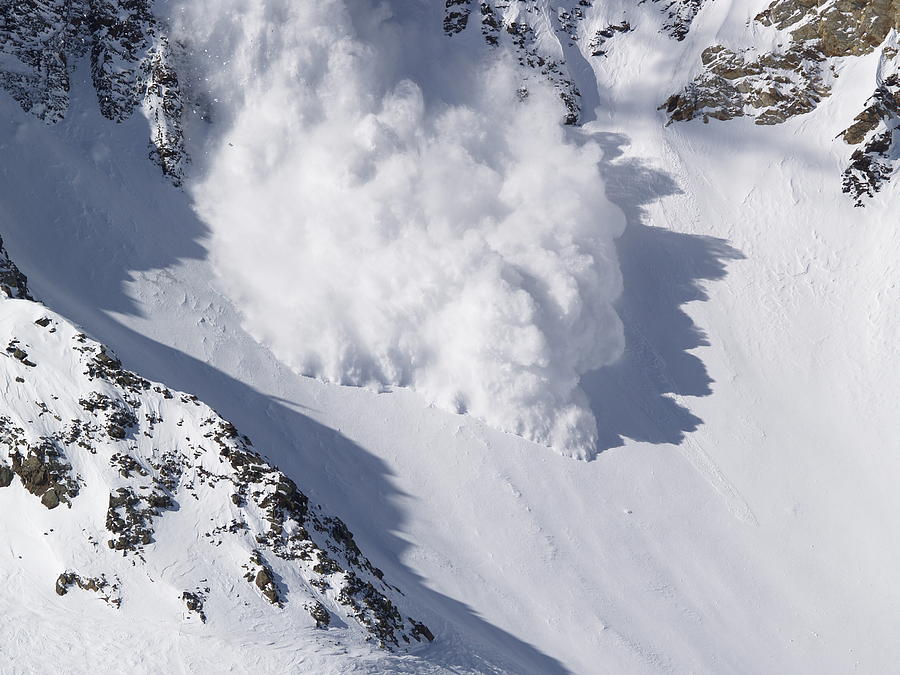
snow avalanche
An avalanche also refers to dangerous geological natural phenomena. During an avalanche, snow mass slides from the steep slopes of the mountains. Its speed can reach one hundred meters per second.
During the fall of the avalanche, an air pre-flood wave forms, causing great damage to the surrounding nature and any objects erected on the path of the phenomenon.
Why is an avalanche coming off
There are several reasons why a snow avalanche begins to descend. These include:
- intense snow melting;
- long snowfall, resulting in a large snow mass, not able to stay on the slopes;
- earthquakes.
An avalanche can occur due to loud noises. This phenomenon is triggered by fluctuations in the air, resulting from the emitted sounds at a certain frequency and with a certain force.
As a result of the avalanche, the destruction of buildings, engineering structures. Any obstacles in its path are destroyed: bridges, power lines, oil pipelines, roads. This phenomenon is causing great damage to agriculture. If there are people in the mountains at the moment of snow melting, then they may die.
Avalanches in Russia
Knowing the geography of Russia, you can accurately determine where the most dangerous avalanche sites are. The most dangerous areas are mountains with a lot of snowfall. These are Western and Eastern Siberia, the Far East, the Urals, as well as the North Caucasus and the mountains of the Kola Peninsula.
Avalanches account for about half of all mountain accidents. The most dangerous periods of the year are winter and spring. During these periods, up to 90% of snow mass gathering is recorded. An avalanche can go down at any time of the day, but most often snow melts during the day, and rarely in the evening. The impact force of the snow mass can be estimated at tens of tons per square meter! While driving, snow sweeps everything in its path. If a person is blocked, then he will not be able to breathe, as snow clogs the airways, penetrating dust into the lungs. People can freeze, get severe injuries, frostbite of internal organs.
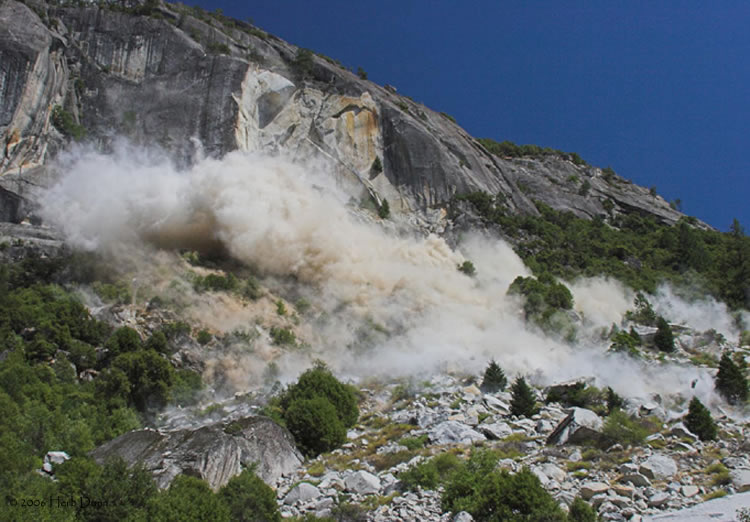
Landslides
And what phenomena are related to geological hazardous events and what are they? These include landslides. These are detachments of large masses of rocks on river valleys, the coast of the seas. Collapses occur due to mass separation from the mother base. Collapses can block or destroy roads, cause overflows of huge amounts of water from reservoirs.
Collapses are small, medium and large. The latter include rock breaks weighing from ten million cubic meters. Debris from one hundred thousand to ten million cubic meters belongs to the middle ones. The mass of small landslides reaches tens of cubic meters.
Collapses can occur as a result of the features of the geological structure of the area, as well as with cracks on the slopes of the mountains. The cause of the collapse may be the activity of people. This phenomenon is observed during crushing of rocks, as well as due to the large amount of moisture.
As a rule, collapses occur suddenly. Initially, a crack forms on the rock. Gradually, it increases, causing the separation of the breed from the maternal formation.
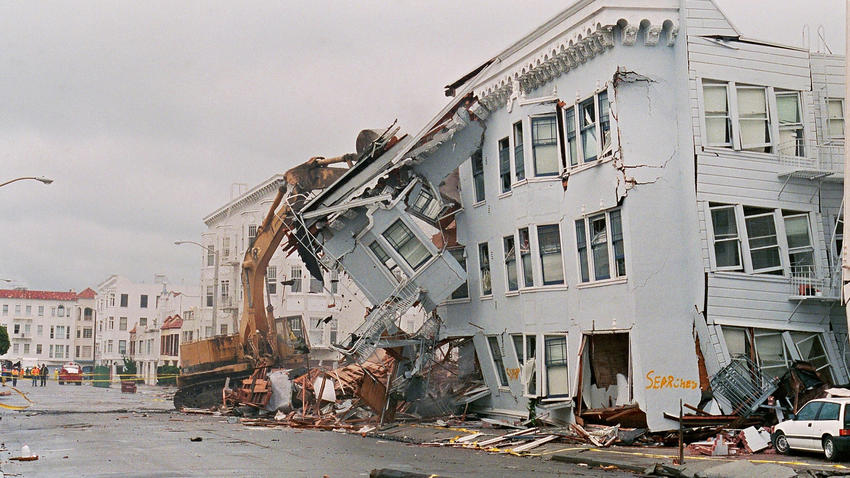
Earthquakes
When they ask: “Indicate dangerous geological phenomena,” the first thing that comes to mind is earthquakes. It is this species that is considered one of the most terrible, destructive manifestations of nature.
To understand the causes of this phenomenon, it is necessary to know the structure of the Earth.As you know, it has a hard shell - the earth's crust, or lithosphere, mantle and core. The lithosphere is not a whole formation, but several huge plates, as if floating along the mantle. These plates move, collide, come on each other. Earthquakes occur in the zones of their interaction. However, tremors can occur not only along the edges of the plates, but also in their central part. Other reasons that cause tremors include volcanic eruptions, anthropogenic factors. In some regions, seismic activity is clearly traced due to fluctuations in the water in the reservoir.
Earthquakes can result in landslides, subsidence, tsunamis, avalanches and much more. One of the dangerous manifestations is the liquefaction of the soil. With this phenomenon, the earth is oversaturated with water, and with tremors lasting from ten seconds or more, the soil becomes liquid, loses its bearing capacity. As a result of this, roads are destroyed, houses are sagged and destroyed. One of the most striking examples of this phenomenon is considered to be soil liquefaction in 1964 in Japan. As a result of this event, several multi-story buildings slowly tipped. They had no damage.
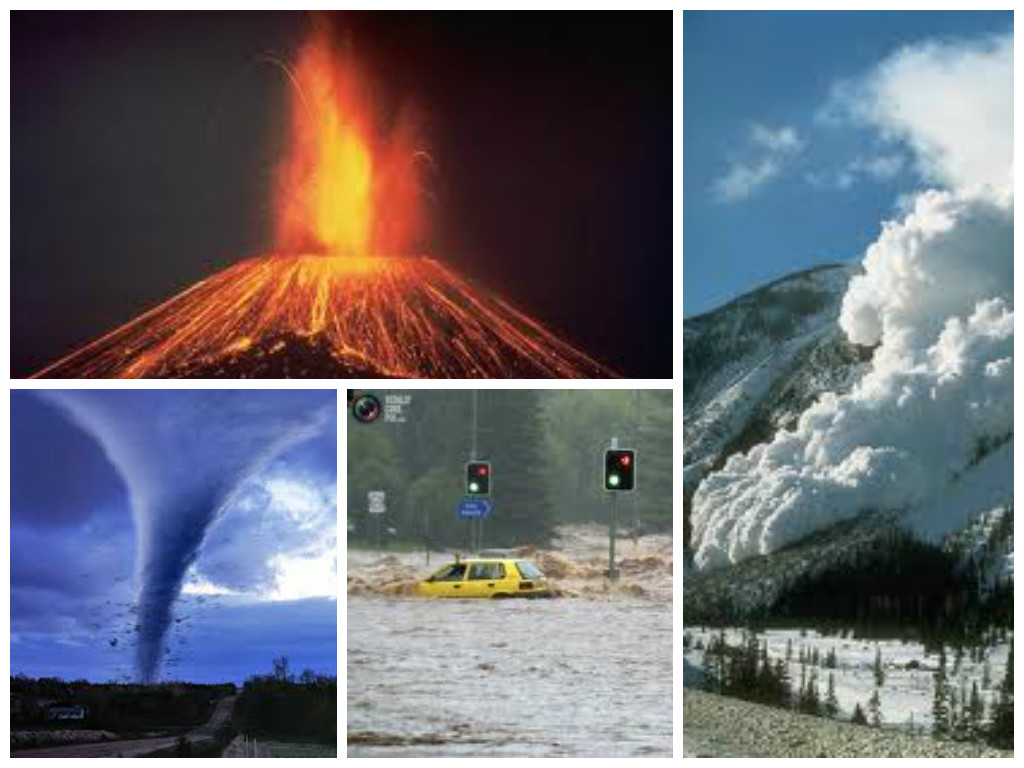
Another manifestation of shocks may be subsidence. This phenomenon occurs due to particle vibration.
Severe consequences of earthquakes can be dam ruptures, as well as the occurrence of floods, tsunamis and more.
